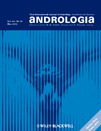Low inhibin B levels alone are not a reliable marker of dysfunctional spermatogenesis in childhood cancer survivors
Summary
Hormone and semen analyses were carried out to examine the diagnostic value of hormones and hormone combinations as markers of spermatogenesis in male patients who had received oncological treatment in childhood. Hormone analyses from 73 participants and spermiograms from 42 participants were evaluated. Spearman’s correlation coefficients and measures of diagnostic accuracy were calculated for the hormone and semen analysis values. Inhibin B levels of <80 ml/ml, follicle-stimulating hormone (FSH) levels of >10 IU l−1 and a combination of the two parameters showed positive predictive values for azoospermia of 0.423, 0.6154 and 0.6667 respectively. While 32% of the 73 participants showed a combination of abnormal inhibin B and FSH values, which strongly indicates impaired spermatogenesis, 31% of the 42 spermiogram results revealed azoospermia. The hormone and semen analyses showed that approximately one-third of the participants had fertility impairment. Inhibin B alone thus does not reflect spermatogenesis as well as inhibin B in combination with FSH in patients who have undergone cancer treatment in childhood. Both parameters should therefore be evaluated in paediatric cancer follow-up programmes to allow better identification of treatment regimens that cause persistent azoospermia in male childhood cancer survivors.




